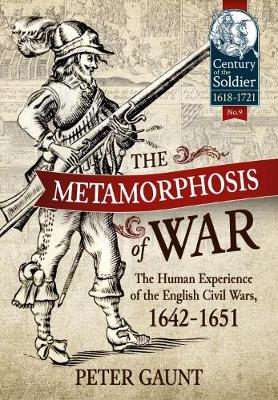Century of the Soldier
1 total work
This book is about the generation who were alive in England and Wales in the mid-17th century and who had both the good fortune and the bad to witness, to live through and (willingly or unwillingly, for good or ill) to participate in the English Civil Wars of 1642-51. It seeks to explore and to retell the stories of those who fought, or were directly caught up, in the civil wars and to recover their very varied personal experiences.
This is, therefore, an exploration of the human experiences of civil war rather than a broader military history or a narrative of the conflict; it offers an examination of how warfare affected individuals rather than of the techniques, technologies and technicalities of the fighting - and it provides an assessment of the impact of war on combatants, on civilians and on those who fell somewhere in-between rather than of the political, religious and constitutional causes and consequences of the civil wars.
Almost all of the five million men, women and children who were alive in England and Wales during the mid-17th century would have been affected in some way - great or small - by the civil wars. Many adult males fought in the wars, with perhaps one in 10 of them in arms during each of the main campaigning seasons, and perhaps around a quarter of all adult males in arms at some stage during the wars. Many perished, for probably around 200,000 people died in England and Wales as a direct or indirect consequence of the hostilities. Many other civilians were caught up in the fighting, for around 200 English and Welsh towns and villages were garrisoned and attacked, or saw significant military action; more rurally, dozens of castles, manor houses and churches were also fortified and contested. Even those living in areas which largely escaped direct involvement in the fighting were deeply affected by the conflict, for they were governed by new wartime county administrators with wide new powers to conscript, to billet and to requisition goods and property - and they were also hit hard in the pocket and compelled to pay new, regular and much higher taxes to finance the wars. The vast majority of those who fought in, or who were directly affected by, the fighting of the civil wars have left no record of their own - and their experiences can only be hazily reconstructed from impersonal or mediated source material. However, sufficient direct, personal and first-person accounts and other sources survive in the form of diaries, journals, letters, accounts and so forth to enable us to build up a vivid picture of the varied experience of participating in or living through a decade of civil war in England and Wales. These first-person sources are privileged in this new study in order to construct a fresh interpretation of the human experience of the English Civil Wars.
This is, therefore, an exploration of the human experiences of civil war rather than a broader military history or a narrative of the conflict; it offers an examination of how warfare affected individuals rather than of the techniques, technologies and technicalities of the fighting - and it provides an assessment of the impact of war on combatants, on civilians and on those who fell somewhere in-between rather than of the political, religious and constitutional causes and consequences of the civil wars.
Almost all of the five million men, women and children who were alive in England and Wales during the mid-17th century would have been affected in some way - great or small - by the civil wars. Many adult males fought in the wars, with perhaps one in 10 of them in arms during each of the main campaigning seasons, and perhaps around a quarter of all adult males in arms at some stage during the wars. Many perished, for probably around 200,000 people died in England and Wales as a direct or indirect consequence of the hostilities. Many other civilians were caught up in the fighting, for around 200 English and Welsh towns and villages were garrisoned and attacked, or saw significant military action; more rurally, dozens of castles, manor houses and churches were also fortified and contested. Even those living in areas which largely escaped direct involvement in the fighting were deeply affected by the conflict, for they were governed by new wartime county administrators with wide new powers to conscript, to billet and to requisition goods and property - and they were also hit hard in the pocket and compelled to pay new, regular and much higher taxes to finance the wars. The vast majority of those who fought in, or who were directly affected by, the fighting of the civil wars have left no record of their own - and their experiences can only be hazily reconstructed from impersonal or mediated source material. However, sufficient direct, personal and first-person accounts and other sources survive in the form of diaries, journals, letters, accounts and so forth to enable us to build up a vivid picture of the varied experience of participating in or living through a decade of civil war in England and Wales. These first-person sources are privileged in this new study in order to construct a fresh interpretation of the human experience of the English Civil Wars.
